Key Challenges & Solutions
🚀 No PM? No Problem. Iterative Design at its Core
Without a Product Manager, we adopted a lean, user-driven approach—gathering real-world feedback and iterating rapidly.
Mapped out Epics: Call funnel views, individual call breakdowns, and AI training interactions to help users understand how Echo learns and improves.
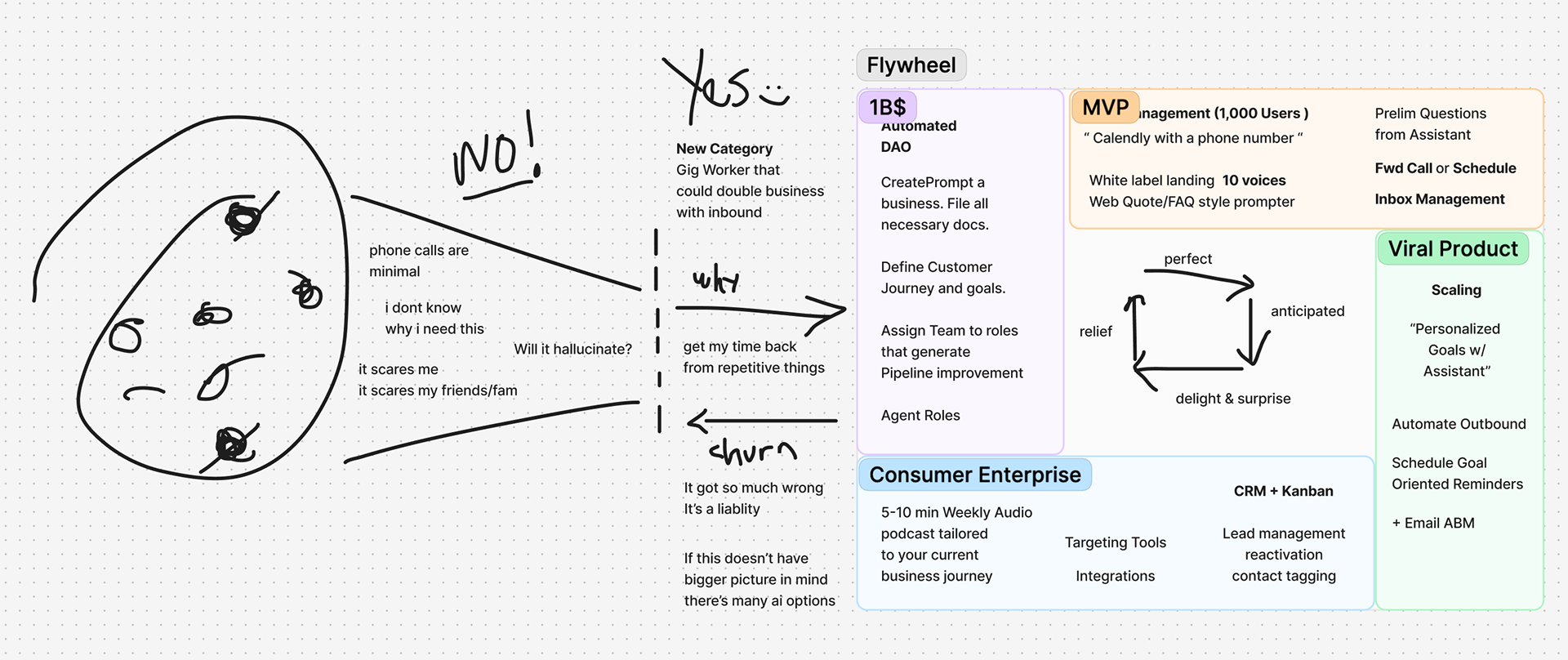
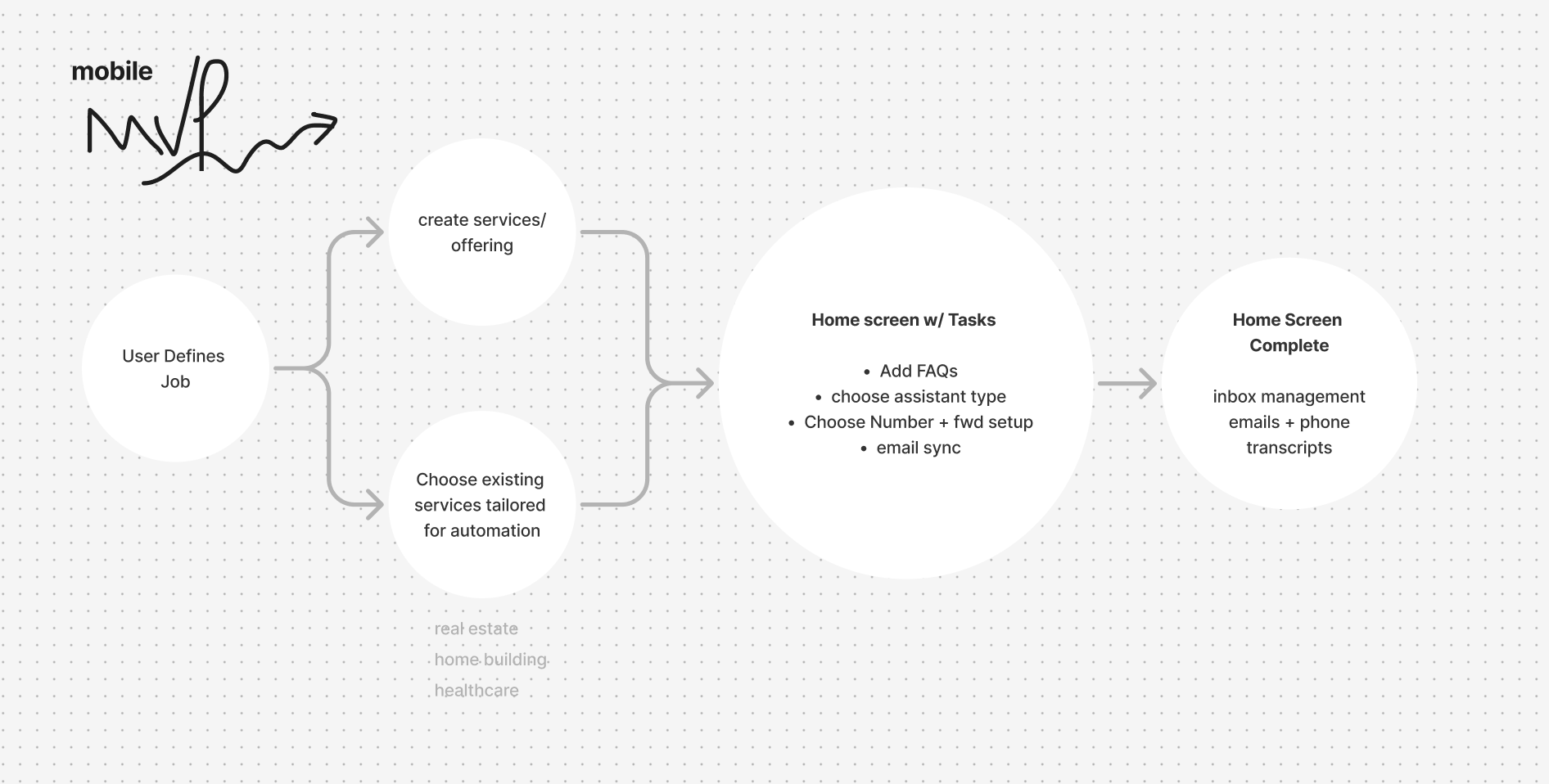
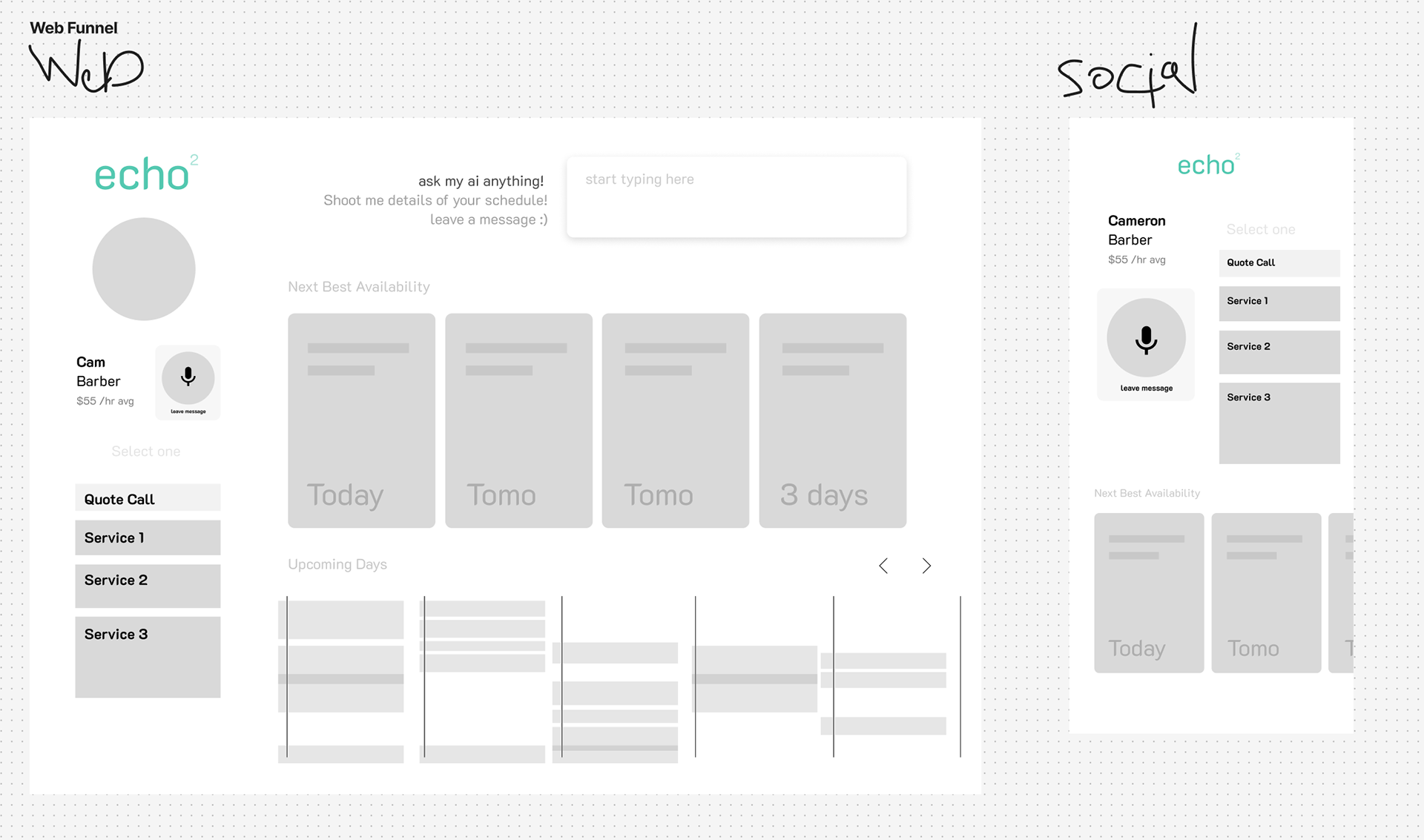
🔍 Educating Users on a New Experience
Users lacked a mental model for AI call handling.
Solution: Designed Funnels & Channels, where different Questions could trigger AI responses.
Result: Created a clear UX flow for users to visualize AI decision-making during a call.
📱 First MVP & Prototype: TestFlight & User Learning
The initial version focused on Call Forwarding & Voice Configuration.
Released via TestFlight to onboard early adopters and test real-world AI call handling.
Iterative feedback cycles refined the call setup UX, ensuring users could quickly train their AI caller.
Testing Methods Used:
✅ Prototype Walkthroughs: Observed users interacting with the UI, focusing on how they set up AI call handling.
✅ Live Call Simulations: Users received test calls, allowing us to analyze real-time reactions and refine AI responses.
✅ A/B Testing of Call Scripts: Experimented with different AI tones and response styles to see what felt most natural.
✅ Survey Feedback & NLP Analysis: Collected structured feedback, then used NLP to categorize common themes and pain points.
✅ Prototype Walkthroughs: Observed users interacting with the UI, focusing on how they set up AI call handling.
✅ Live Call Simulations: Users received test calls, allowing us to analyze real-time reactions and refine AI responses.
✅ A/B Testing of Call Scripts: Experimented with different AI tones and response styles to see what felt most natural.
✅ Survey Feedback & NLP Analysis: Collected structured feedback, then used NLP to categorize common themes and pain points.
🗣 Key Insights from Interviews & Testing
🔹 Users needed a sense of control – They wanted to train Echo and understand how their AI assistant was making decisions. This led to clearer customization options in the UI.
🔹 Call setup had to be dead simple – The onboarding flow was too technical at first, so we introduced a step-by-step visual guide that simplified the process.
🔹 AI responses needed humanization – Users preferred natural-sounding AI replies rather than robotic messages, leading us to refine voice tone and inflection.
🔹 Privacy concerns emerged early – Users were wary of how Echo stored and used their data. We addressed this by giving users full visibility into call logs and adding clear opt-in settings.
Final Takeaway
Echo wasn’t just about automating voicemail—it was about redefining how we interact with voice calls. By designing a transparent, intuitive AI learning system, we turned confusion into clarity, proving that AI-powered voice assistants could be more than just a backup—they could be a proactive, intelligent communication tool. 📞🤖
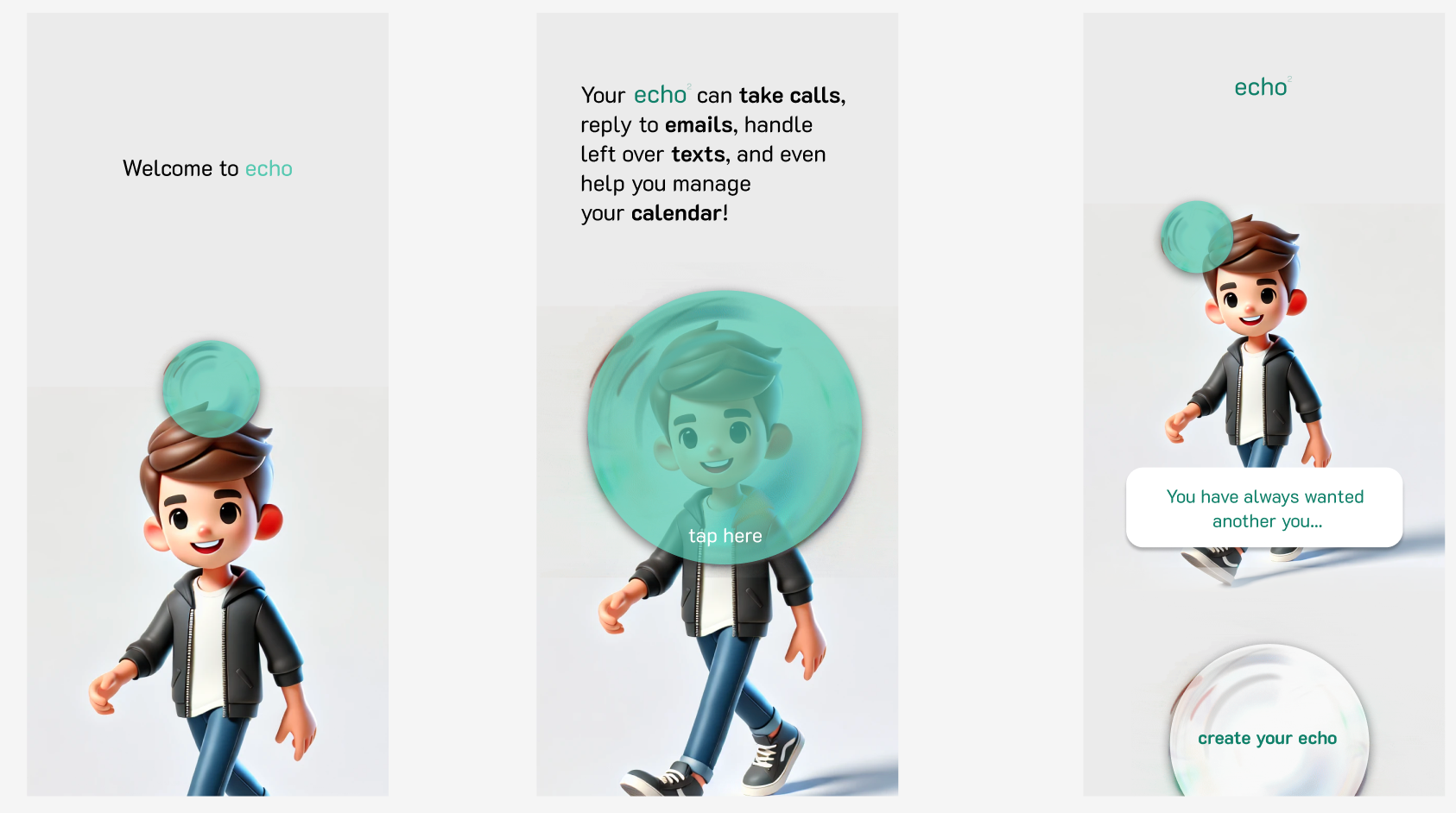
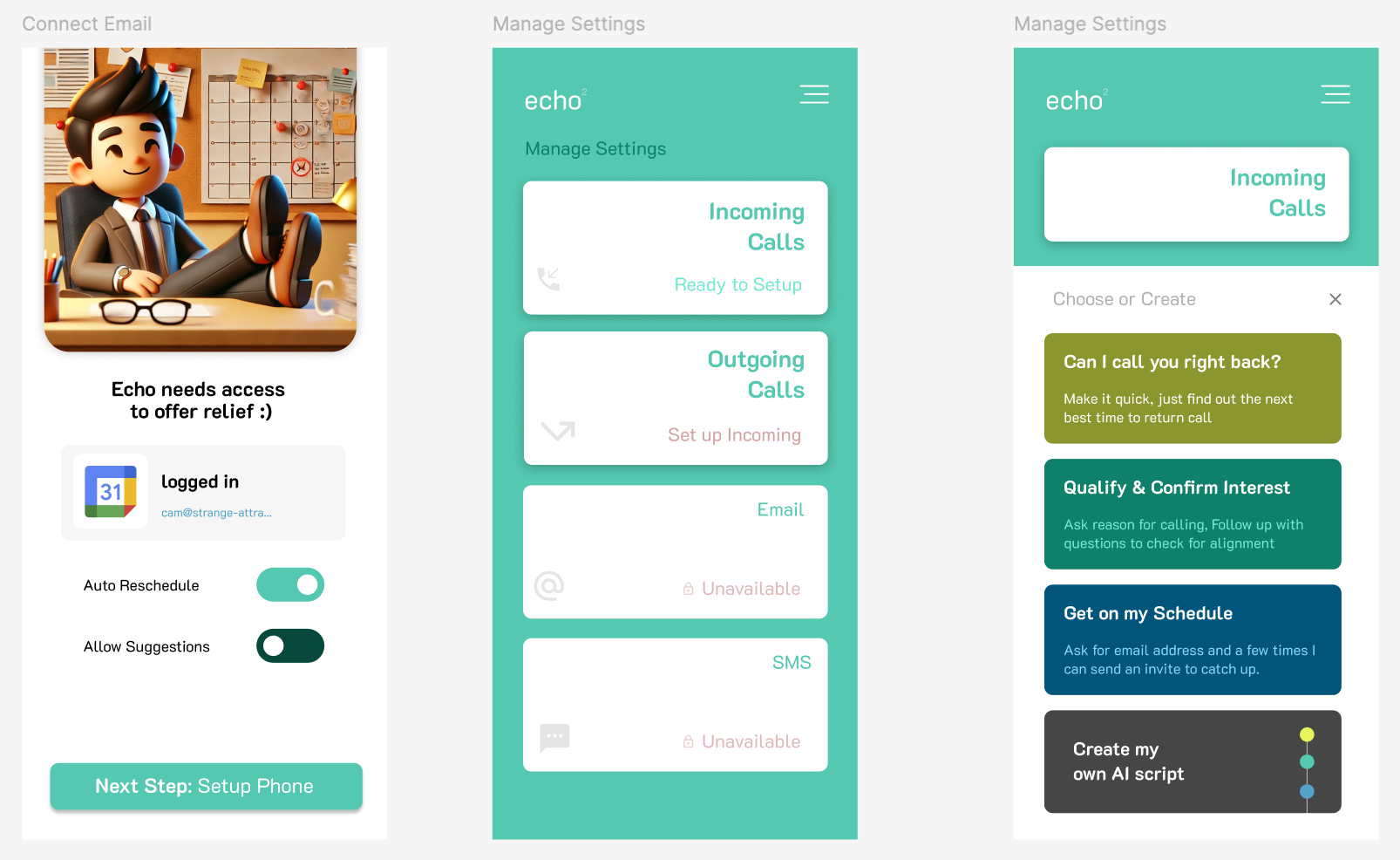
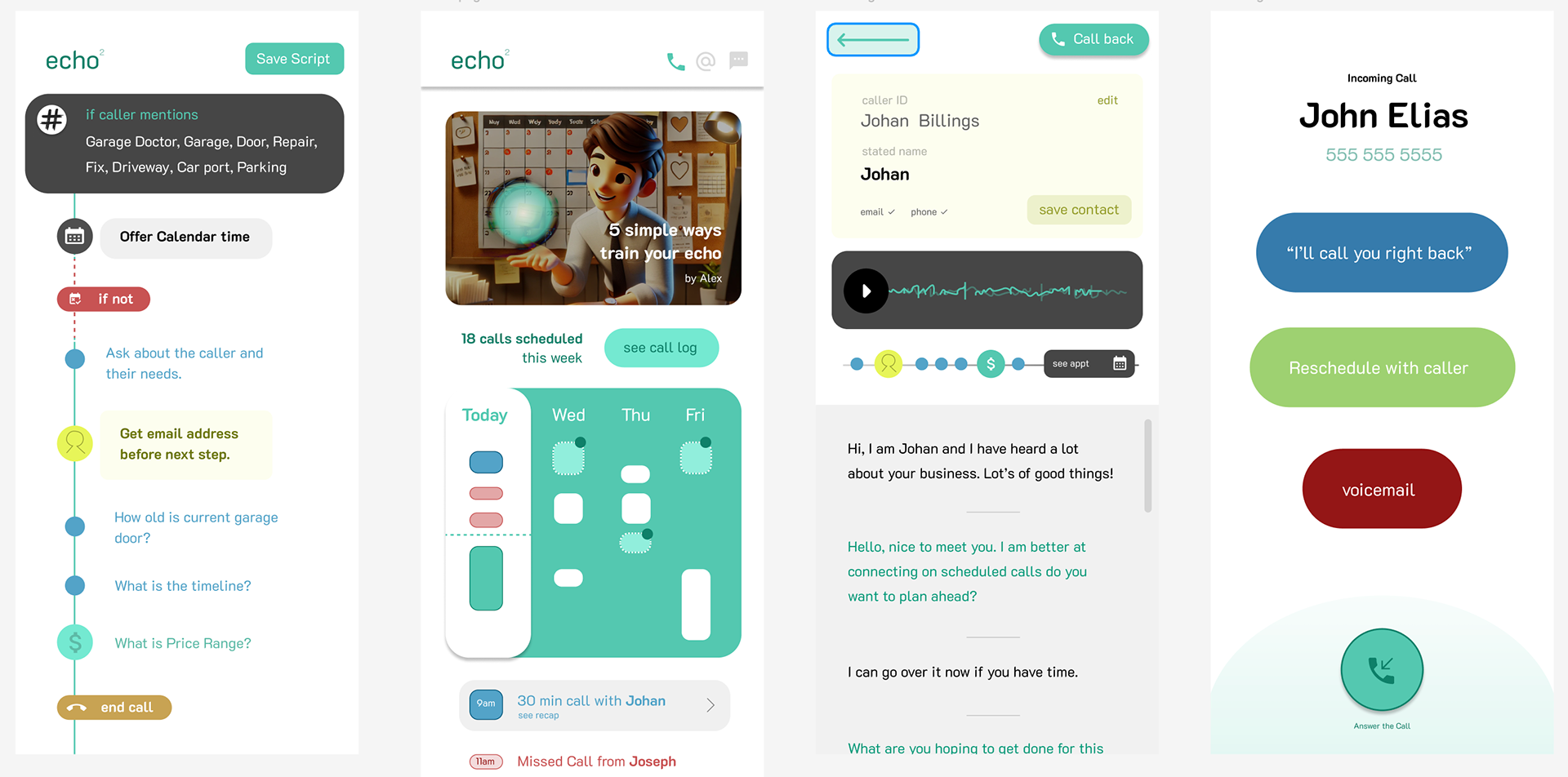
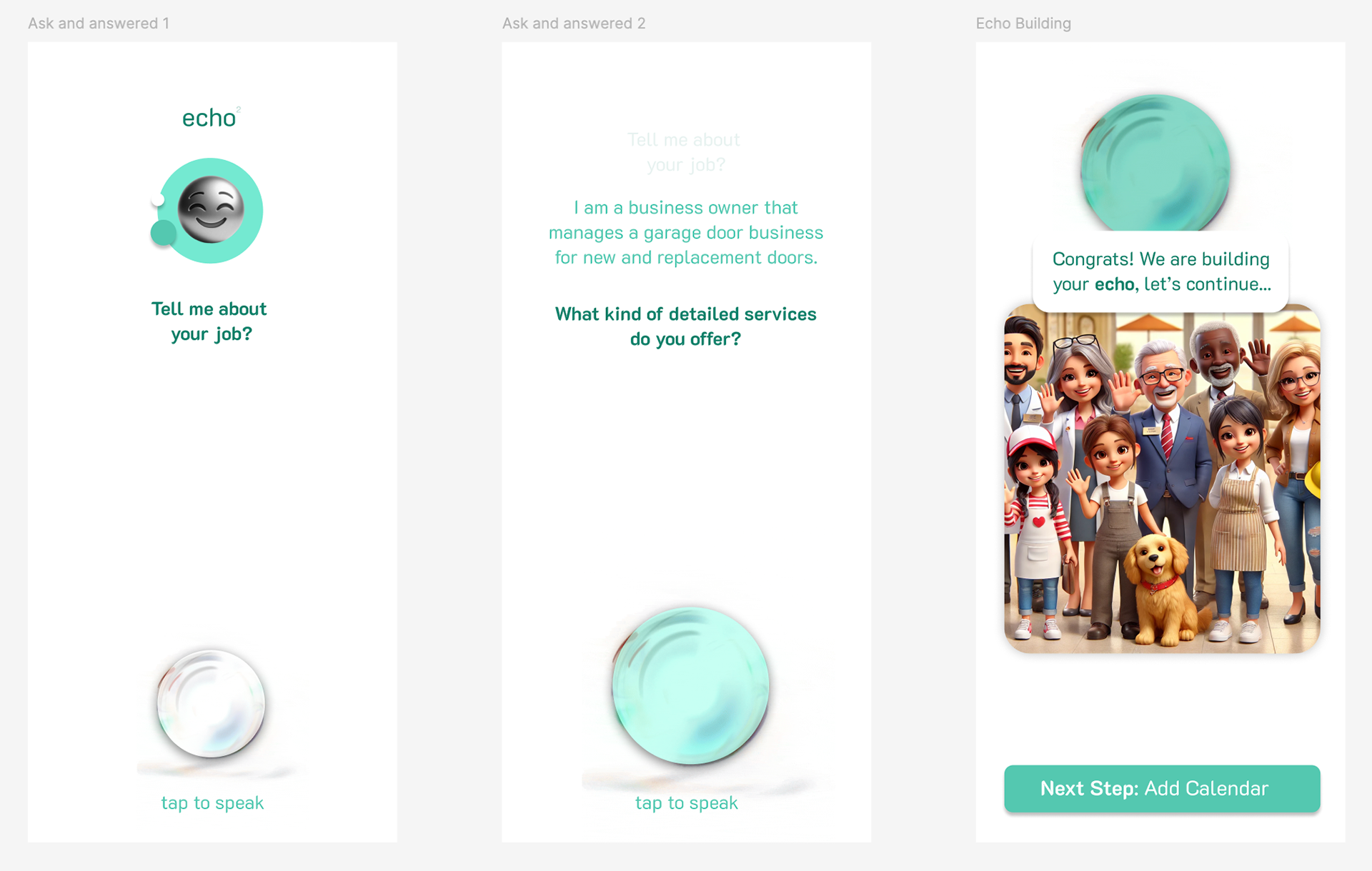
See Prototype below :)